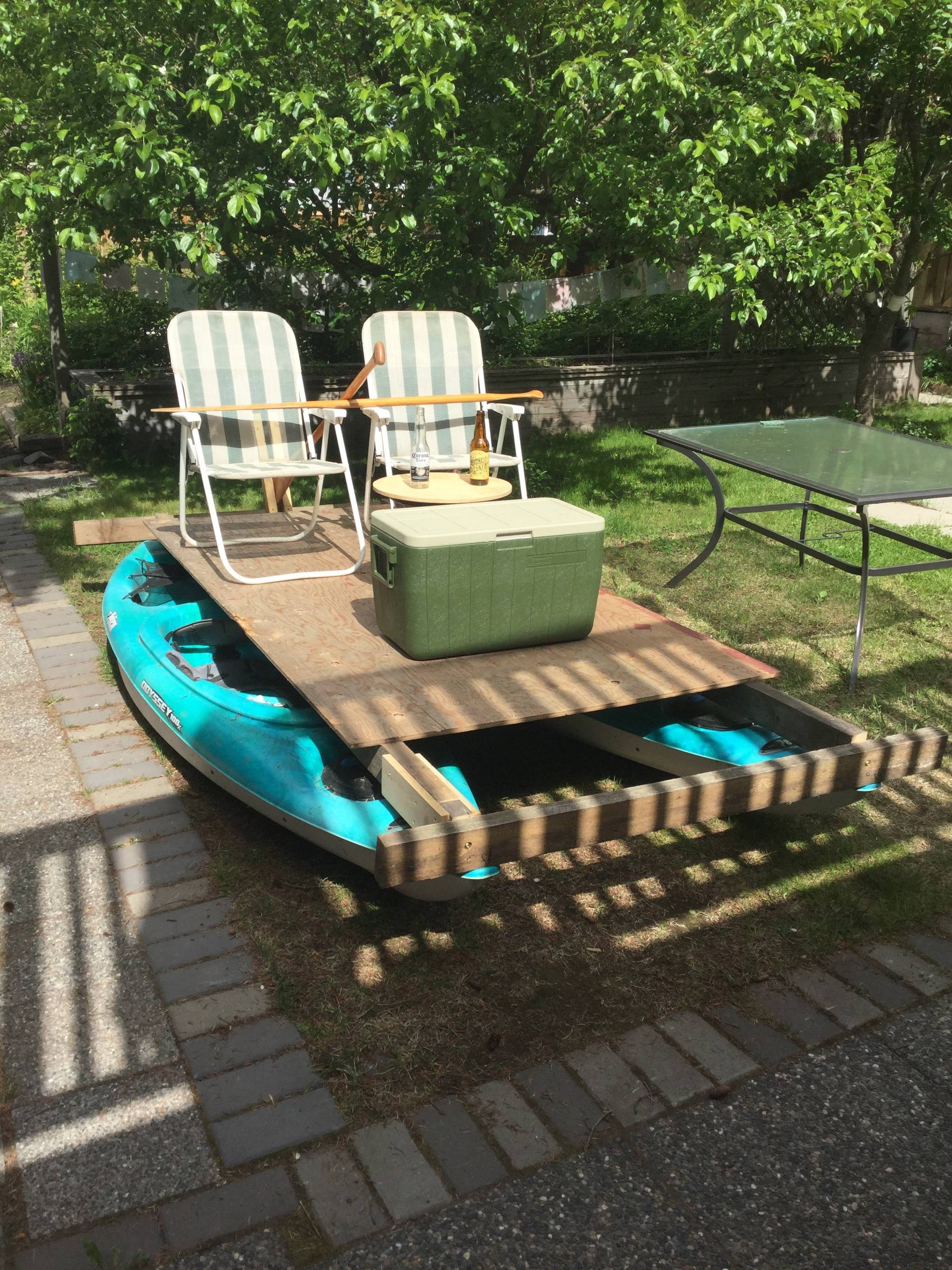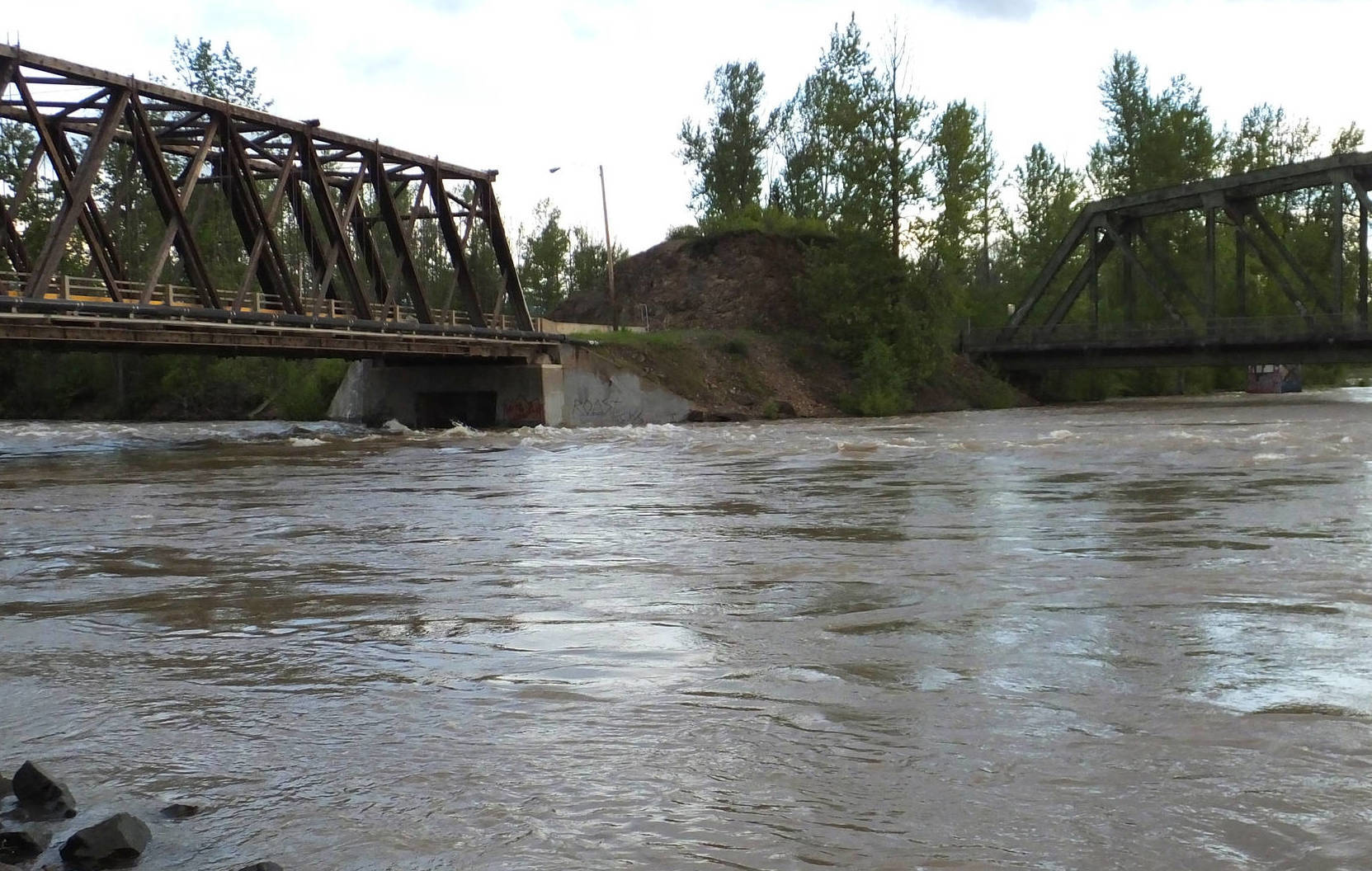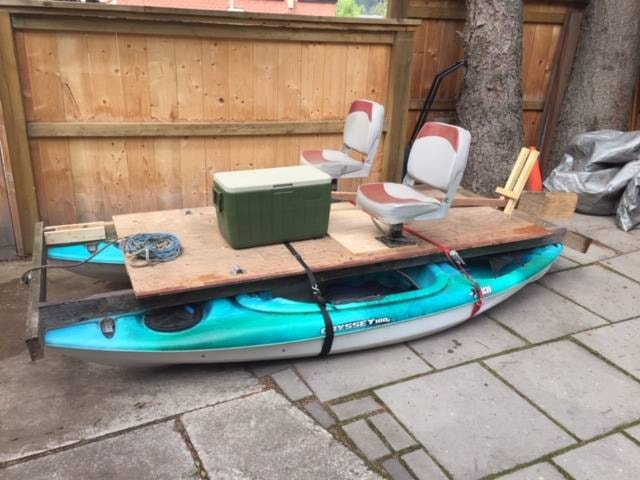Come hell or high water, 73-year-old Bruce McGonigal and his pal Rob Goodine intend to float a homemade catamaran 30 kilometres down the Bulkley River from Quick to Smithers in August.
What would inspire someone to undertake such an endeavour? What else?
“I never thought I would live to experience a pandemic and I’m going crazy,” he said. “I was outside thinking of something to do and I saw the two kayaks under a tarp and had this epiphany; it just kind of flashed and then it kind of just morphed.”
It morphed into a craft, dubbed the HMCV Cat 1, with two boat seats and a cooler bolted onto a wooden superstructure attached to the two kayaks with an oar for a rudder.
“When you think about it, it’s quite a stupid thing that we are about to do,” McGonigal said.
“Structurally, those two kayaks… they’re not designed to take that kind of force as a catamaran,” he said. “Points of contact, that’s going to be the issue.”
To resolve that issue, McGonigal initially bolted the superstructure onto the kayaks’ bow and stern with GRK RSS screws, a rugged structural screw with high tensile, torque and shear strength. But looking at craft afterward, he recognized while the screws themselves might hold up, there was another potential problem.
RELATED: Howard rides the waves at Tatlow Falls
“There’s going to be all kinds of force and the only thing [holding the platform on] is the fibreglass thickness of the kayak at the bow and stern,” he explained. “It became readily apparent that the four RSS screws were not adequate.”
So, he added four cinching belts.
“I’m now putting all my faith in the four cinching belts that bind the superstructure to the mid-frame of the kayaks in addition to the four GRKs,” he said. “It’s going to be a test by fire.”
McGonigal — who has been on the river many times in other kinds of crafts and who worked in water management in Smithers for 35 years — figures by mid-August the river will be into its lower flow phase and most of the 30-or-so kilometres will be a fairly casual float.
“It’s a coastal, sort of fairly high-velocity river on the west coast,” he said. “You just have to be attentive, there are some log jams, so you just pick the best channel.”
TRAVEL: Discover Smithers B.C.
However, there are three critical points where hydraulic conditions could be a major factor.
“They’re not to be ignored or taken casually,” he said.
The first is just above the Telkwa Bridge.
“There’s some fast heavy water in there,” he said. “I think I’m only talking Class 1, no more than Class 2 [rapids] for sure, but in this contraption we’ll have to pick the best line.”
The next one is at Eddy Park, where they will have to avoid heavy water in the eddy, but McGonigal believes there is a side channel they can use to get around it.
Finally, the big test, the standing wave at Tatlow Falls, a favourite play area for kayakers, canoeists, riverboarders and even motorboaters, but has unlikely ever seen the likes of McGonigal’s latest invention.
“I’ve been over, around, Tatlow Falls many times so you just do river right,” he said.
What’s the worst that could happen?
“The worst-case scenario is we go under and we don’t come up,” he said. “A more realistic scenario is the boat breaks up and either a) we salvage the kayaks and paddle down or b) if the whole thing floats away on us, we paddle to shore and start walking to a road.”
In any case, he said he has the best partner for the task. Goodine, a local contractor, is a big, strong guy, he said.
“He’s cannon-proof, he’s rock solid,” McGonigal said. “When things go sideways, he’s the kind of guy you want at your side.”
They are not picking a date for the adventure, simply waiting for the first calm, sunny, 20-plus degree day in August.
They are also not planning to test the boat or have anybody monitoring the float.
“I just want to put it in and see what happens,” McGonigal said.
“I’ve had threats [from] people, who want to have a good laugh, who have kayaks, but you know that’s kind of like a lifeline and sometimes when you’re walking a tightrope, you think about the visceral thrill of not being connected and the consequence of failure.”
editor@interior-news.com
Like us on Facebook and follow us on Twitter


